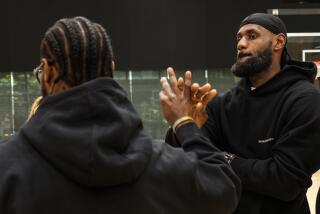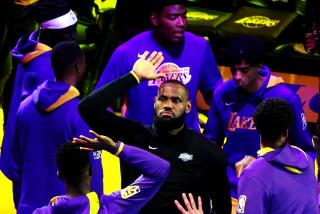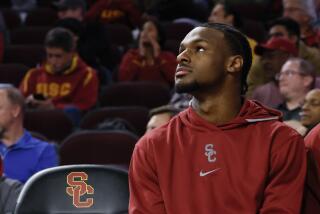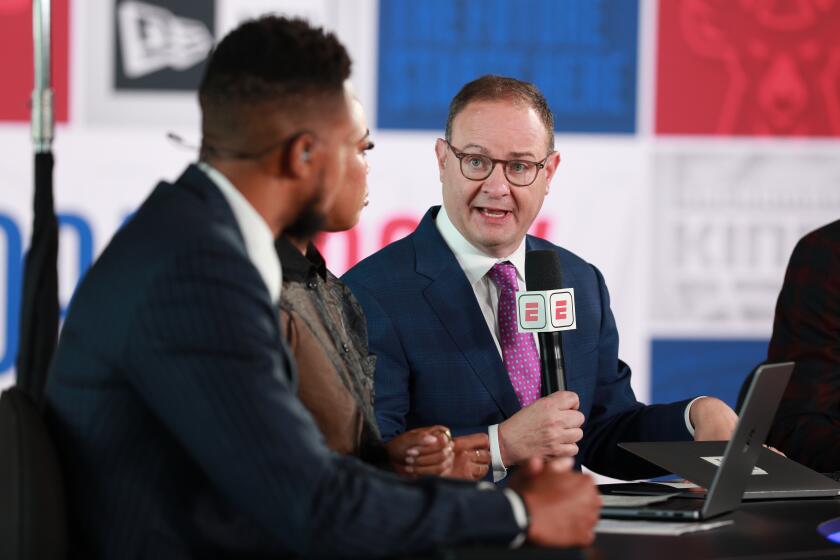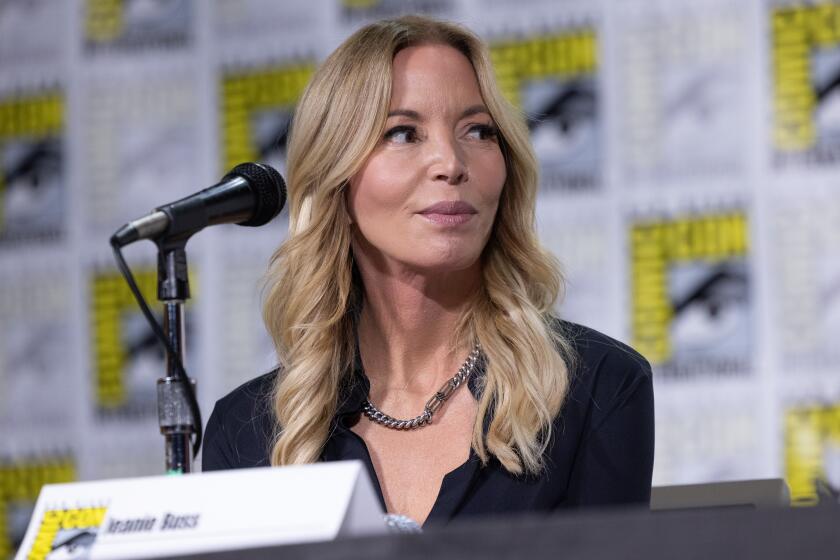Lakers can do the math to get value-added pick in draft’s first round
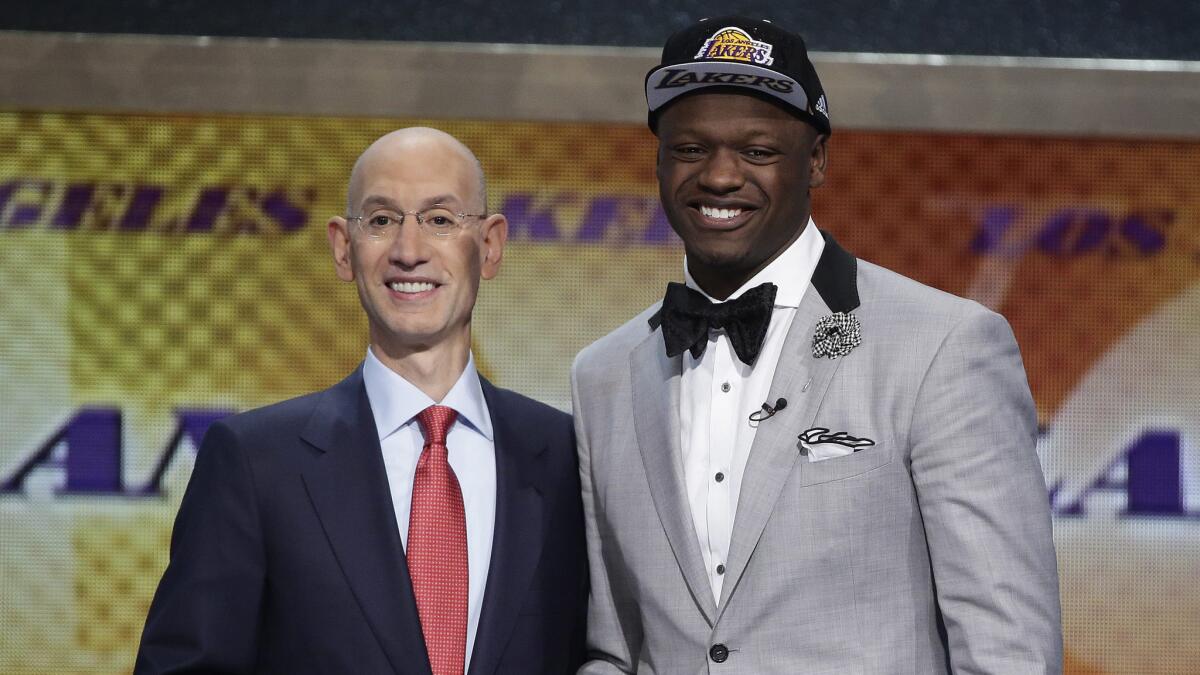
A week from Tuesday, basketball executives will gather for the NBA draft lottery in New York to watch a bunch of ping-pong balls rattle inside a big glass container. For the Lakers, the spot they end up in could have a huge effect on the franchise’s future.
The Lakers already know they have Houston’s first-round pick, No. 27 overall, for the Jeremy Lin trade. The wild card is whether the Lakers can keep their top-five protected draft pick.
Because the Lakers finished with the fourth-worst record this season, they have an 82.8% chance to hang on to that top-five pick. The Lakers also have a 37.8% chance of moving into one of the top three draft spots on lottery night. But if they drop below the fifth spot, the Lakers will send that pick to Philadelphia because of the Steve Nash trade.
If the Lakers end up in the top five, what are the chances they will choose an impact player in the draft June 25?
The Times crunched the numbers on every first-round draft pick (270 in all) since the NBA changed eligibility standards in 2006 to prevent high school players from getting drafted, to try to answer the question: What’s the value of each pick in the first round?
Win shares is one calculation favored by stat geeks to assess players. The statistic estimates a player’s value by adding up the scoring he generates on offense and the points he prevents on defense, to estimate how many wins he added in a season. For example, the last time Kobe Bryant played a full season, 2012-13, he had about 11 win shares. That means he helped the Lakers win about 11 more games than they would have without him, easily the difference between the playoffs and the lottery.
In general, the higher a player is selected in the NBA draft, the greater the extremes. Since 2006, the No. 1 overall picks have included a future MVP in Derrick Rose, plus All-Stars Blake Griffin and Anthony Davis, but it’s also produced Andrea Bargnani, Greg Oden and Anthony Bennett.
Overall, No. 1 picks have added about 4.4 wins to their teams each season on average, according to Basketball-Reference.com, more than any other pick. For comparison, that 4.4 win share is the same value brought by the explosive but injury-riddled Rose during his career.
After that, the picks tend to fall into clusters. Nos. 2 and 3 have added about 3.7 wins per year, No. 4 has added 3.3 and No. 5 has added 3.0.
As with every spot in the draft, there are wild variations. Consider former No. 2 overall picks Kevin Durant, who’s added almost 12 wins a season, and former Connecticut center Hasheem Thabeet, who has added only one and hasn’t played in the NBA since the 2013-14 season.
Another wrinkle is that it often takes three to four seasons for NBA executives to fully evaluate a player. Thabeet, for instance, was drafted in 2009 and played for four NBA teams before Detroit, his fifth stop, waived him last fall. And then there is Julius Randle, selected No. 7 overall by the Lakers in June. Randle broke his leg in the season opener, so his grade is incomplete. But the Lakers expect him to be healthy next season.
Results vary in the rest of the top 10, but for the other teams in the lottery, remaining in that top-10 zone is important. Most of the picks from No. 11 on down add less than two wins per season.
What about the Lakers’ 27th pick? Teams have generally had good fortune with that pick.
The average player in that spot adds for about 1.6 wins per year — not excellent, but significant compared to the 0.5 wins per season added by players picked 29th.
The reason? No. 27 has unearthed players such as Aaron Afflalo and Rudy Gobert.
There are a few strange outliers. The ninth pick, for example, is behind only the top pick in value, and No. 21 (four-time All-Star Rajon Rondo was selected in that spot) has outperformed No. 8.
The bottom line: There are hits and misses at every spot in the NBA draft. In other words, after the actual lottery, the draft in June is another kind of lottery.
More to Read
All things Lakers, all the time.
Get all the Lakers news you need in Dan Woike's weekly newsletter.
You may occasionally receive promotional content from the Los Angeles Times.
